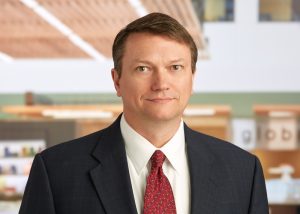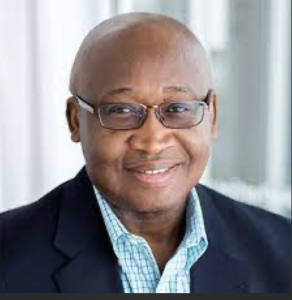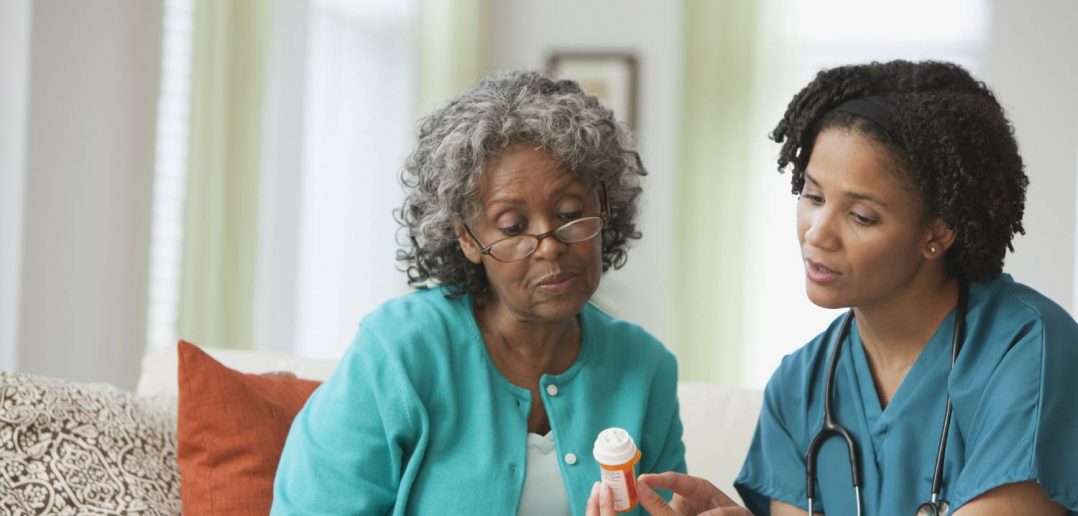Inequities in cancer care cause specific populations in the U.S. and worldwide to bear a more significant burden of disease than the general population, based upon barriers. These barriers to prevention and care have long existed but were undeniably exacerbated by the COVID-19 pandemic.
February 4 marks World Cancer Day, which for 2022-2024 has adopted the theme of "Closing the Care Gap" to raise awareness of these persistent inequities. A global initiative from the Union for International Cancer Control, World Cancer Day serves as a positive movement for people working together to create a cancer-free world.

Steve Kearney, PharmD and Medical Director at SAS, recently sat down with General Elder Granger, Chief Medical Officer at Berg Health, president and chief executive officer of THE 5Ps, LLC, a health care, education, and leadership consulting organization. Dr. Granger, fellowship-trained in Hematology-Oncology, served in the U.S. Army for over 35 years. He has passionately worked to improve global health care systems and foster better health equity throughout his career.
Dr. Kearney: Thank you for chatting with SAS to help recognize World Cancer Day. When you think about closing the care gap, what does that mean to you?
Gen. Granger: In health care, inequality refers to the uneven distribution of resources. By contrast, inequity means unjust, avoidable differences in care or outcomes. The difference may seem subtle but closing the cancer care gap is simply providing everyone with equal resources or access to the resources. One size doesn't fit all, and every challenge demands a different solution. Equity is about providing everyone what they need to bring them up to the same level or basic standards, especially in healthcare. I've traveled to over 30 countries and have seen the impact that better resources and technology have on health care and what that looks like in the villages of South Africa to my hometown of West Memphis, AR.
Current Climate: Barriers to health and equitable care
Dr. Kearney: Given your military experience and time as Deputy Director and Program Executive Officer of the TRICARE, the U.S. Military's health care and insurance program, what factors might be contributing to health care inequity?

Gen. Granger: To start, we need to look at social determinants, such as the environment, quality of food and water, heat, transportation, safety and other environmental factors, and make sure people have access to these necessities. The military health system or environment is a good example for providing the necessities, though not perfect. The pandemic has exacerbated the lack of availability and access to these resources and expanded, or brought to the forefront of society, care inequities globally.
Dr. Kearney: Those who have limited access can be those in underserved communities, those in more rural or underdeveloped areas, and so on. What can access issues look like?
Gen. Granger: Access to care does not discriminate. As you get farther from a medical institution, you'll see that there's an increase in incidents. Mortality, survival, morbidity and all those things are impacted simply by distance from medical providers and the time commitment in seeing a doctor. This is especially true for those in underserved and low-income communities. One thing we've seen is, the mobile phone has done as much as anything tech-wise to make health information and access available in areas lacking medical infrastructure and with populations that lack resources. Access to technology and the data these devices produce make a difference.
Why Diversity, Equity & Inclusion (DEI) is essential to closing the care gap
Dr. Kearney: When organizations invest in collecting data for under-studied groups, how do those new statistics help make a difference in diagnosis and treatment?
Gen Granger: Historically, clinical trials have consisted predominantly of white males. However, those outcomes often do not reflect the general populace. Some diseases are genetic and reside in a particular ethnic or racial group. By not providing a genuinely inclusive trial and collecting diverse data, health care facilities promote inequities, such as biases and assumptions in health decisions, missing essential risk factors and comorbidities, increased risk of death from the same condition across different groups, and more. There are medical centers or community-based cancer centers in America that take care of a very diverse and inclusive population. Without diverse data, these communities and health institutions would not be accurately represented or treated.
Learn 3 ways health analytics empowers quality cancer care for allDr. Kearney: As you said, without diverse research, the general populace is not accurately represented and, therefore, cared for. What are organizations doing to "close the gap"? As you know, recently, SAS and non-profit CEO Roundtable for Cancer partnered with Historically Black Colleges and Universities (HBCUs) and Hispanic Serving Institutions (HSIs) through its "Going for Gold" initiative. In your view, how do partnerships like these help to "close the gap"?
Gen. Granger: The first step is education. That's why partnering with HBCUs and HSIs is so essential. They know their families, communities and people and want to dedicate their time to researching and supporting their communities. With more diverse data, health care organizations can have improved outcomes through detection, prevention and treatment.
The role of policymakers and businesses in closing the care gap
Dr. Kearney: Where should policymakers and corporations focus on improving health inequities?
Gen. Granger: Health innovations and new understanding can only make a difference in people's lives if they can access those treatments — expanding access is a fundamental need for equity. Policymakers should be working on getting access to education, good quality care, clean food and water, as well as improving the environment, infrastructure and broadband internet access for all.
Corporations can support their communities by investing in education, social programs, youth programs and other various ways to make a huge and lasting impact. Corporations can shape or influence good governance at state, local and federal agencies to improve the communities both home and abroad.
How better data can improve outcomes
Dr. Kearney: Improving population health and advancing patient outcomes has long been a core mission at SAS, which is why we are partnering with Virginia Commonwealth University (VCU) Massey Cancer Center to explore disparities in cancer rates and mortality among vulnerable populations. VCU Massey collects data directly from the community, making citizens partners in the research effort. How does an effort like that fit into your vision for closing the care gap?
The care gap is not due to a lack of technology, treatment or data; it's about making sure the technology, detection, prevention, treatment and data are inclusive or available to our low-income and vulnerable populations.
Gen. Granger: For example, the work between SAS and VCU Massey Cancer Center will demonstrate the inclusiveness of our low-income, vulnerable and underrepresented populations in areas of detection, prevention and treatment, especially in cancer clinical trials.
Indeed, the work with VCU is a significant first step in the right direction. It's a pleasure working with SAS, Dr. Winn, and the VCU staff to continue to spotlight the importance of diverse data and how to close the health equity gap.
The 5 Ps of that guide health care improvements
Dr. Kearney: We appreciate your partnership Dr. Granger, and your voice out there driving change; it's been phenomenal. Any final thoughts?
Gen. Granger: I see the fruits of this labor moving things in the right direction. I like to use what I call the 5 Ps to summarize things.
- The first P is People; we have the opportunity on this earth and in the US to take care of the people in this country, the low-income, the vulnerable, giving them information, education and backing it up with good data. So, we reach them where they are.
- The second P is Process; we can put in significant processes, programs, regulations, policies and procedures that will change the lives of many with the correct data, information and knowledge that will lead to sound policies and outcomes.
- The third P is Prevention; by doing this, we can prevent more negative health outcomes and drive down the cost of health care.
- The fourth P is Productivity; populations want to be productive. Low-income, vulnerable and underrepresented populations wish to have a healthy and productive life. Therefore, we must give them tools, education and programs to make them more efficient and effective and boost their quality of life.
- The last P is Price; price comes in different forms. There is the price we all pay to do good, then the price people pay simply by being in vulnerable positions. There is also monetary price; we spend more on education. We spend a lot on health care and programs that are often not distributed equally. Whatever we do, it must be data-driven and have value and relevance.
Dr. Kearney: Thank you so much for your time today; it is greatly appreciated.

